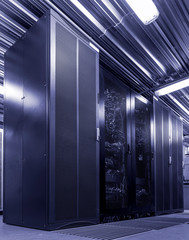Human beings are generally risk-averse. We make “risk assessments” all the time. Whether it’s deciding to pet the neighbor’s dog or eat a ghost chili curry for dinner. While avoiding risks and their consequences is an easy decision to make on a personal level. Making the same decision in a specific professional setting can be difficult.
Inadequate risk assessment and management can negatively impact continuity and productivity in many ways. Especially in the federal arena where the need for public funding and continuity is being challenged globally.
In the data center industry, traditional resiliency and redundancy standards, such as those developed by the Telecommunications Industry Association, have provided a risk assessment framework for building owners and facility operators. However, they are still too broad to allow for accurate assessment. Public data center operators must consider the tradeoffs between facility design and maintenance when evaluating investments and risks. Visit also: best APC UPS for computers
Risk Assessment: Data Center Design
The design phase of a data center is the recommended entry point for risk assessment. It involves selecting the most appropriate site, assessing your IT needs, determining what risks need to be mitigated, eliminated, or accepted, and designing the facility infrastructure to address those risks. Once the facility is built, ongoing maintenance and disaster recovery must be provided.
Site selection.
When selecting a new site or evaluating the location of an existing data center, understanding and mitigating geographic, regional, local, and site and building risks can help reduce the impact of downtime. Climate, energy bills, incentives, and regulations must also be considered.
IT needs.
To determine IT needs, data center operators must first define the function of the data center. Is it directly responsible for supporting business-critical transactions and storing critical data, or is it simply an emergency center? These classifications will help operators determine the scope of IT infrastructure required and understand the requirements to maintain availability, such as power reliability and energy consumption.
Risk assessment.
By performing operational failure tests, data center operators can understand the impact of each scenario on power and cooling for IT equipment. They can then make informed decisions about which risks to accept or avoid.
Design.
After assessing your IT needs and determining your risk tolerance, data center builders can decide whether a traditional or prefabricated design is better suited to your needs.
Risk Avoidance: Data Center Maintenance
At this point, federal data center managers must also balance IT needs, risk and efficiency. Unlike commercial data centers, federal data centers must comply with very specific regulations.
As federal IT departments look for ways to centrally optimize existing technology to meet new budget requirements and energy savings goals, solutions such as uninterruptible power supplies (UPS) can be a relatively easy way to reduce costs and increase efficiency. Visit: Best APC data center ups Pakistan
Traditional UPS systems take up little space, but consume a lot of electricity and generate a lot of heat. By adopting a modern system that can be up to 96% more efficient. Datacenter operators can not only reduce the direct cost of power consumption but also significantly reduce cooling requirements.
Example
An obsolete 500 kVA UPS operating at 88% efficiency would incur annual electricity costs of $42,000 and cooling costs of $16,800. After 10 years, such a UPS would be worth $588,000. In contrast, a 500 kVA UPS operating at 96% efficiency would cost only $19,600 per year in direct costs and cooling. Over a 10-year period, this system would save $196,000, or more than $300,000 compared to a less efficient system.
Saving money is important, but downtime is totally unacceptable for many facilities. In many cases, it is much less expensive to spend money first. To mitigate the risk of downtime than to recover from an event.
A disaster plan is important to ensure your facility’s optimal performance. And avoid the costly consequences of downtime, such as lost productivity, financial strain, customer and user feedback, and reputational damage. A comprehensive disaster preparedness plan should include preparation and prevention, incident detection and classification, response, mitigation, and recovery. These plans must be. Prepared regularly and updated as necessary.
In a digital world with large amounts of data and an even greater demand for data. Datacenter failures can have long-term consequences. This is especially true at the federal level. Not only do government agencies have tight budgets. But they are also under tremendous pressure to increase efficiency while ensuring security. By assessing risk, developing optimal functions, and ensuring business continuity. Federal data centers can ensure the continued success of their facilities.
